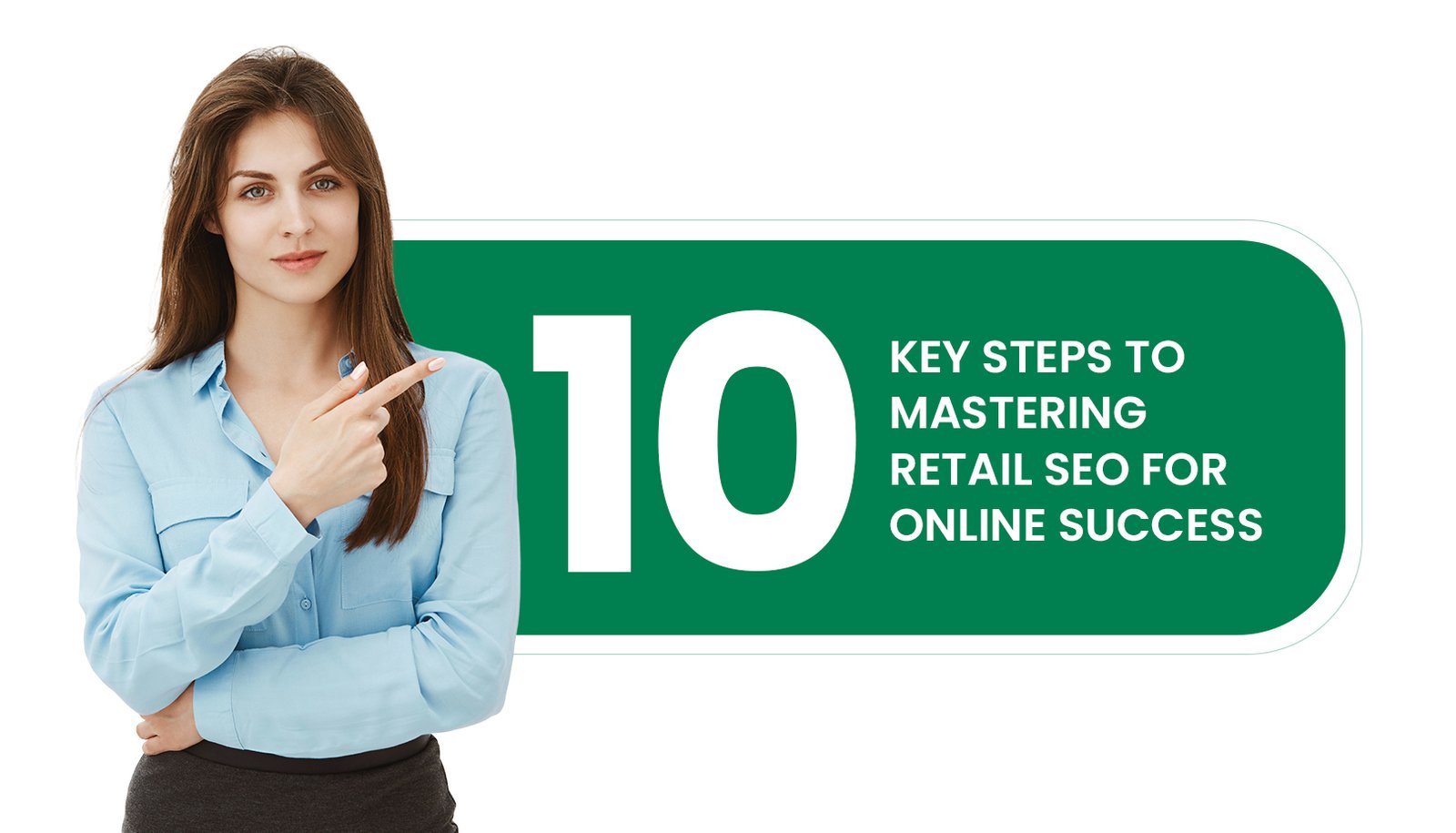




Blog Post

- domainstechtadd
-
February 20, 2025
-
0 Comments
10 Key Steps to Mastering Retail SEO for Online Success
Moving online isn’t just a choice anymore—it’s a necessity. With e-commerce projected to make up nearly 40% of total retail sales by 2025, your online presence is more critical than ever. Whether your customers prefer shopping online, in-store, or a mix of both, your SEO strategy plays a massive role in ensuring they find you when it matters most.
But let’s face it—SEO can seem overwhelming. Don’t worry. We’re breaking it down into 10 simple priorities that will help your retail business thrive online. Follow these steps to attract more traffic, build trust, and grow your sales.
1. Understand What Your Customers Are Searching For
Everything starts with keyword research. It’s like finding out what your customers are thinking. What questions are they asking? What problems do they need solved? Knowing this helps you create content that truly resonates.
Here’s how to get started:
Look for informational keywords to answer their questions.
Use transactional keywords to target buyers ready to make a purchase.
Include navigational keywords so they can easily find your site.
Tools like Google Keyword Planner or Ahrefs can help you uncover valuable keywords. Remember, your strategy should evolve over time—regularly check what’s working and refine it.
2. Show Up Locally
If you have a physical store, optimizing for local search is a game-changer. Claim your Google Business Profile and make sure all the details are accurate, including your address, phone number, and hours.
Add some personality:
Use high-quality photos of your store and products.
Post updates about new arrivals or special offers.
Reply to customer reviews (yes, even the negative ones). Showing you care builds trust.
Local search optimization connects you with nearby customers and encourages them to visit your store.
3. Speak Google’s Language with Structured Data
Structured data helps search engines understand your website better. Think of it as giving Google a roadmap to your content. For retailers, focus on:
Product Schema: Highlight details like price, availability, and reviews.
Local Business Schema: Show your location, contact info, and more.
This extra effort makes your site more likely to appear in rich snippets—those eye-catching search results that get more clicks.
4. Write Content That Helps Your Customers
Did you know 81% of shoppers research online before buying? That’s why creating helpful, high-quality content is so important.
Start by optimizing your category and product pages. Include detailed descriptions and answer common questions about your products. Then, think bigger:
Write blogs that solve problems or inspire your audience.
Add FAQs to address common concerns.
Optimize for featured snippets to capture those “People Also Ask” results.
For example, if you sell outdoor gear, a blog about “How to Choose the Right Hiking Boots” could attract potential customers researching their next purchase.
5. Make Your Images Work Harder
In retail, great visuals are non-negotiable. But did you know your images can also boost your SEO?
Here’s how to optimize them:
Use descriptive file names (e.g., “red-summer-dress.jpg”).
Add alt text so search engines (and visually impaired users) understand what the image shows.
Compress images to keep your site fast without losing quality.
Also, platforms like Pinterest or Instagram rely heavily on visuals. Make sure your images shine there too!
6. Make Your Site Mobile-Friendly
More than half of e-commerce traffic comes from mobile devices. If your site isn’t mobile-friendly, you could be losing out on a huge audience.
Here’s what to focus on:
Ensure your site loads quickly (aim for under three seconds).
Use text that’s easy to read on smaller screens.
Include clear calls-to-action (like “Buy Now” or “Learn More”).
Google’s Core Web Vitals also reward sites that deliver a great user experience. Fast, mobile-friendly pages can give you a competitive edge.
7. Build Relationships with Backlinks
Backlinks—links from other websites to yours—tell search engines that your site is trustworthy and valuable. To earn high-quality backlinks:
Create content that’s so helpful, people want to share it.
Partner with bloggers or influencers in your niche.
Audit your backlink profile regularly to remove spammy links.
For example, a guide like “How to Style Your Living Room” could attract links from interior design blogs. The key is to offer value.
8. Use SEO-Friendly Templates
Consistency is key, especially if you manage lots of product pages. SEO-friendly templates can save time while improving your site’s performance.
Make sure your templates include:
Keyword-rich title tags and meta descriptions.
Proper headings (H1, H2) to organize content.
Internal links to guide users to related products.
Clean, easy-to-navigate templates create a better experience for both users and search engines.
9. Keep Your Site Technically Sound
Think of technical SEO as the engine that keeps your site running smoothly. Regular maintenance ensures there’s nothing blocking your progress.
Run checks for:
Broken links and 404 errors.
Missing metadata or alt text.
Duplicate or thin content.
Use tools like Screaming Frog or Google Search Console to identify and fix issues. A healthy site performs better in search rankings.
10. Measure What Matters
SEO isn’t a set-it-and-forget-it task. To succeed, you need to track your progress and adjust as needed. Some key metrics to monitor include:
Organic traffic (how many people find you through search engines).
Keyword rankings (are you climbing up the search results?).
Conversion rates (are visitors turning into customers?).
Bounce rates (how quickly do visitors leave your site?).
Google Analytics and Search Console are your best friends here. Use their insights to refine your strategy and stay ahead of the competition.
Grozeo: Your Partner in Going Online
If you’re ready to take your retail business online, Grozeo makes it easier than ever. With Grozeo, you can create an online store in under two minutes—no coding required. Simply add products from our database with a single click and start selling right away.
This streamlined solution frees up your time, so you can focus on growing your business and connecting with your customers.
Wrapping It Up
An effective retail SEO strategy isn’t just about getting your site to rank higher. It’s about creating meaningful connections with your audience, solving their problems, and delivering an exceptional shopping experience.
By prioritizing these 10 areas, you’ll build a solid foundation for online success. And with tools like Grozeo, setting up your online store has never been easier. Start today, and watch your retail business thrive in the digital world!
Recent Posts
- How can we Partner with Logistics and Shipping providers to improve Delivery times?
- What are some creative ways to promote sustainability and social responsibility on the platform?
- What are some creative ways to localize the platform for different regions and cultures?
- How to register a domain and choose the perfect brand name for an online store?
- Save Your Store: Grozeo’s Zero-Investment Solution for Retailers
